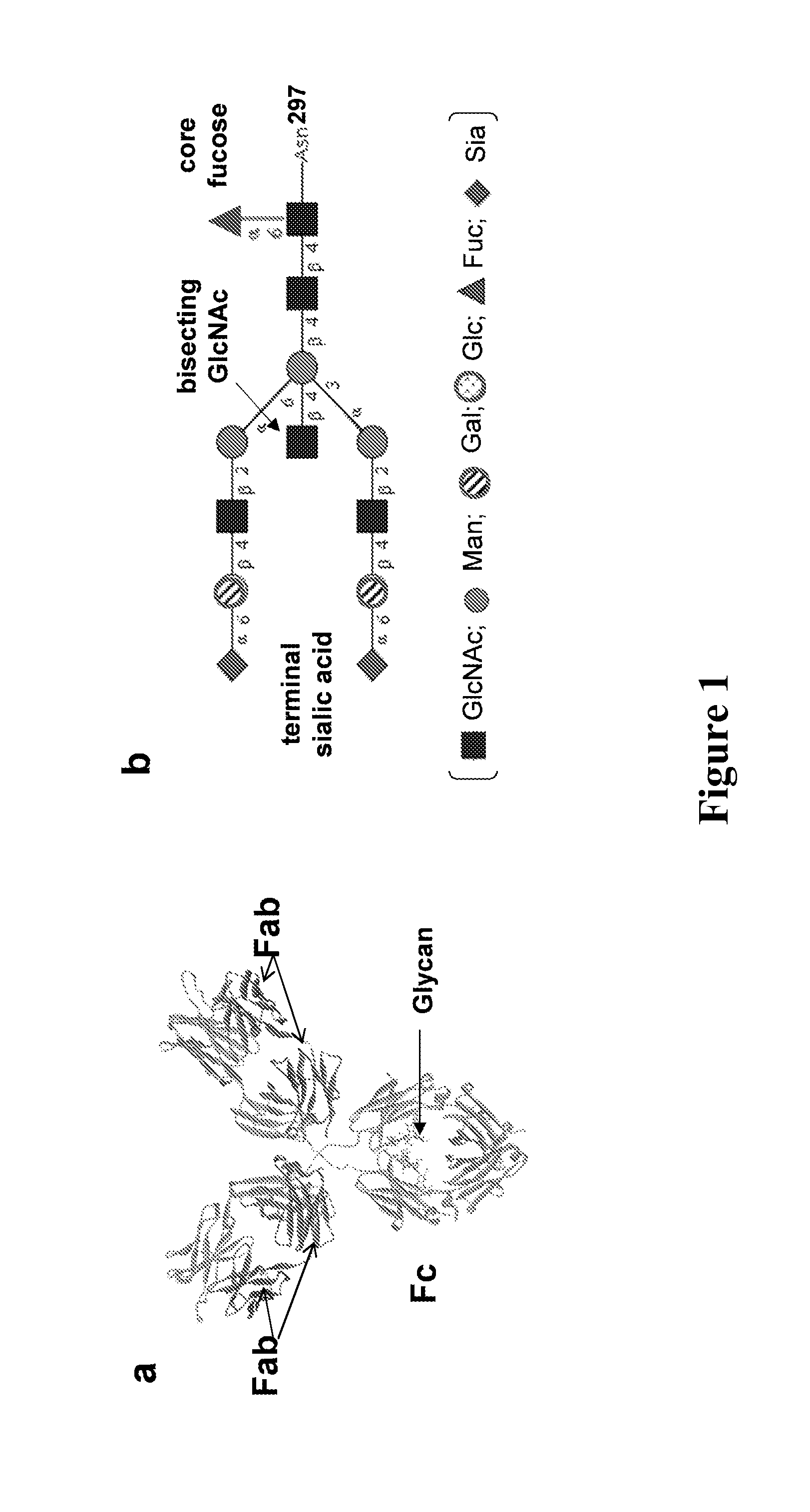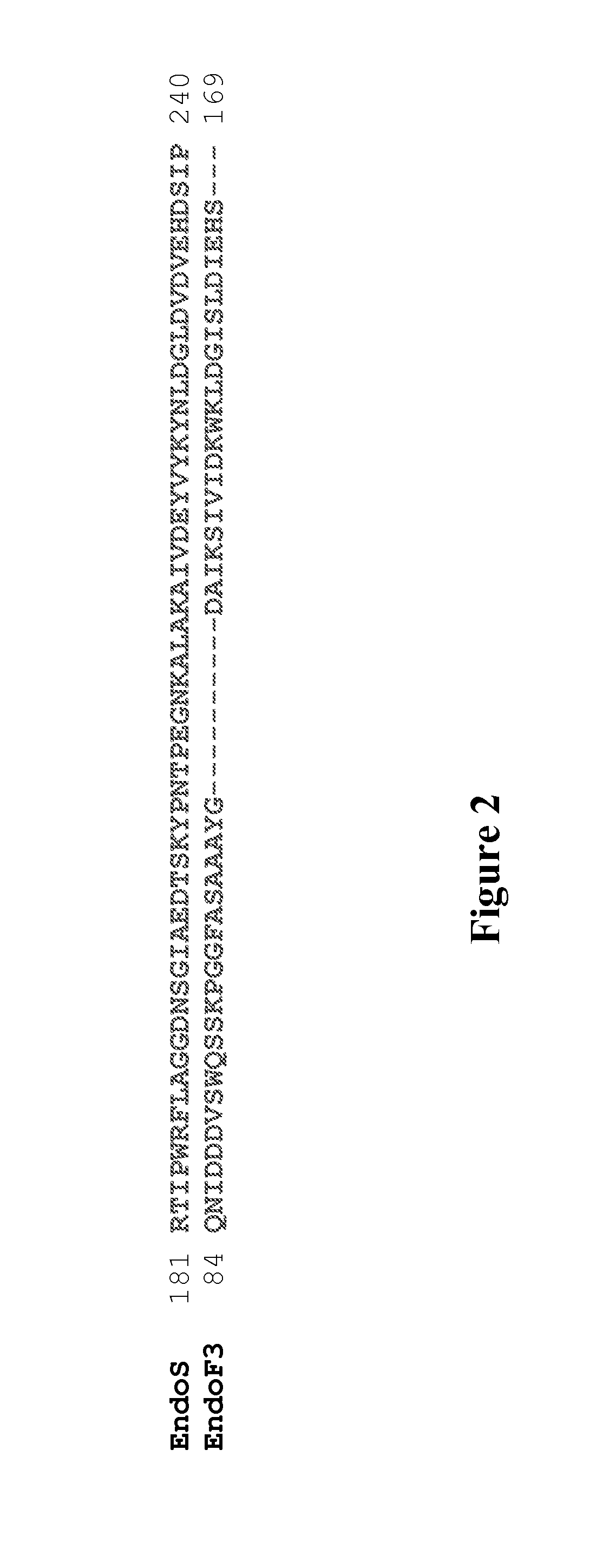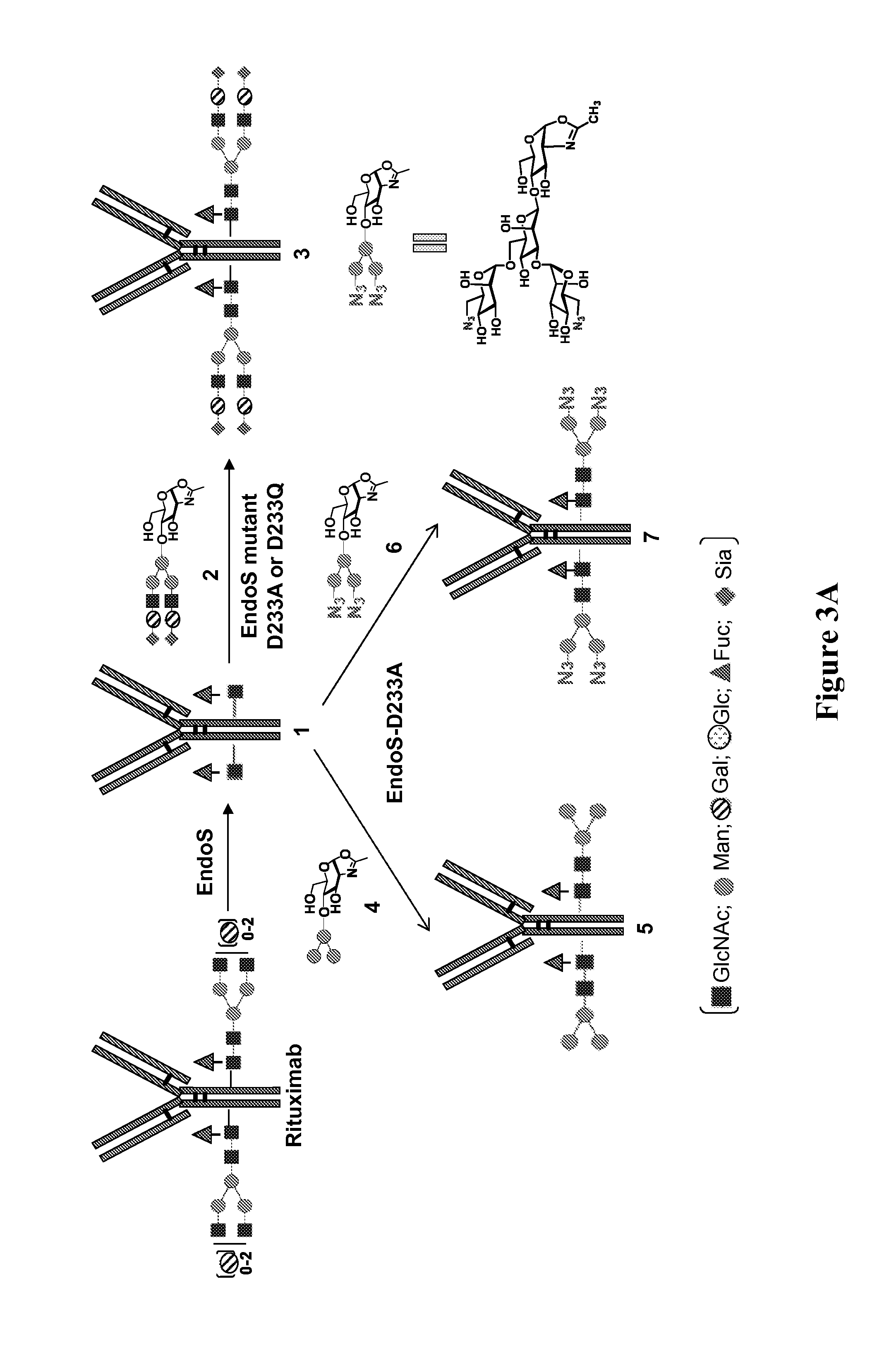Chemoenzymatic glycoengineering of antibodies and fc fragments thereof
a glycoengineering and chemoenzymatic technology, applied in the field of glycoprotein synthesis, can solve the problems of limited glycoform generation, difficult complete control of a defined homogeneous glycoform, and rapid hydrolysis of glycosylated igg products, etc., to achieve increased transglycosylation activity, reduced hydrolysis activity, and prolonging half-life in vivo
- Summary
- Abstract
- Description
- Claims
- Application Information
AI Technical Summary
Benefits of technology
Problems solved by technology
Method used
Image
Examples
examples
Generation of EndoS Glycosynthase Mutants and their Use for Glycosylation Remodeling of Intact Monoclonal Antibody Rituximab
[0094]Glycosynthases have been previously made from several GH85 endoglycosidases (ENGases), including EndoA, EndoM, and EndoD, by site-directed mutagenesis of a key asparagine (Asn) residue responsible for promoting oxazolinium ion intermediate formation during hydrolysis. (36-39, 43) EndoS is an endoglycosidase belonging to the glycoside hydrolase family 18 (GH18), (40, 41) which is in the same GH family as EndoF1, EndoF2, and EndoF3 that were recently shown to have transglycosylation activity. (44) Based on the assumption that EndoS-catalyzed hydrolysis also proceeds by a substrate-assisted mechanism involving the formation of an oxazolinium ion intermediate, as demonstrated by other GH18 endoglycosidases such as EndoF3, (45) potential glycosynthases from EndoS were created by identifying and mutating the residue responsible for promoting oxazolinium ion for...
PUM
| Property | Measurement | Unit |
|---|---|---|
| Time | aaaaa | aaaaa |
| Fraction | aaaaa | aaaaa |
| Biological properties | aaaaa | aaaaa |
Abstract
Description
Claims
Application Information
 Login to View More
Login to View More - R&D
- Intellectual Property
- Life Sciences
- Materials
- Tech Scout
- Unparalleled Data Quality
- Higher Quality Content
- 60% Fewer Hallucinations
Browse by: Latest US Patents, China's latest patents, Technical Efficacy Thesaurus, Application Domain, Technology Topic, Popular Technical Reports.
© 2025 PatSnap. All rights reserved.Legal|Privacy policy|Modern Slavery Act Transparency Statement|Sitemap|About US| Contact US: help@patsnap.com



